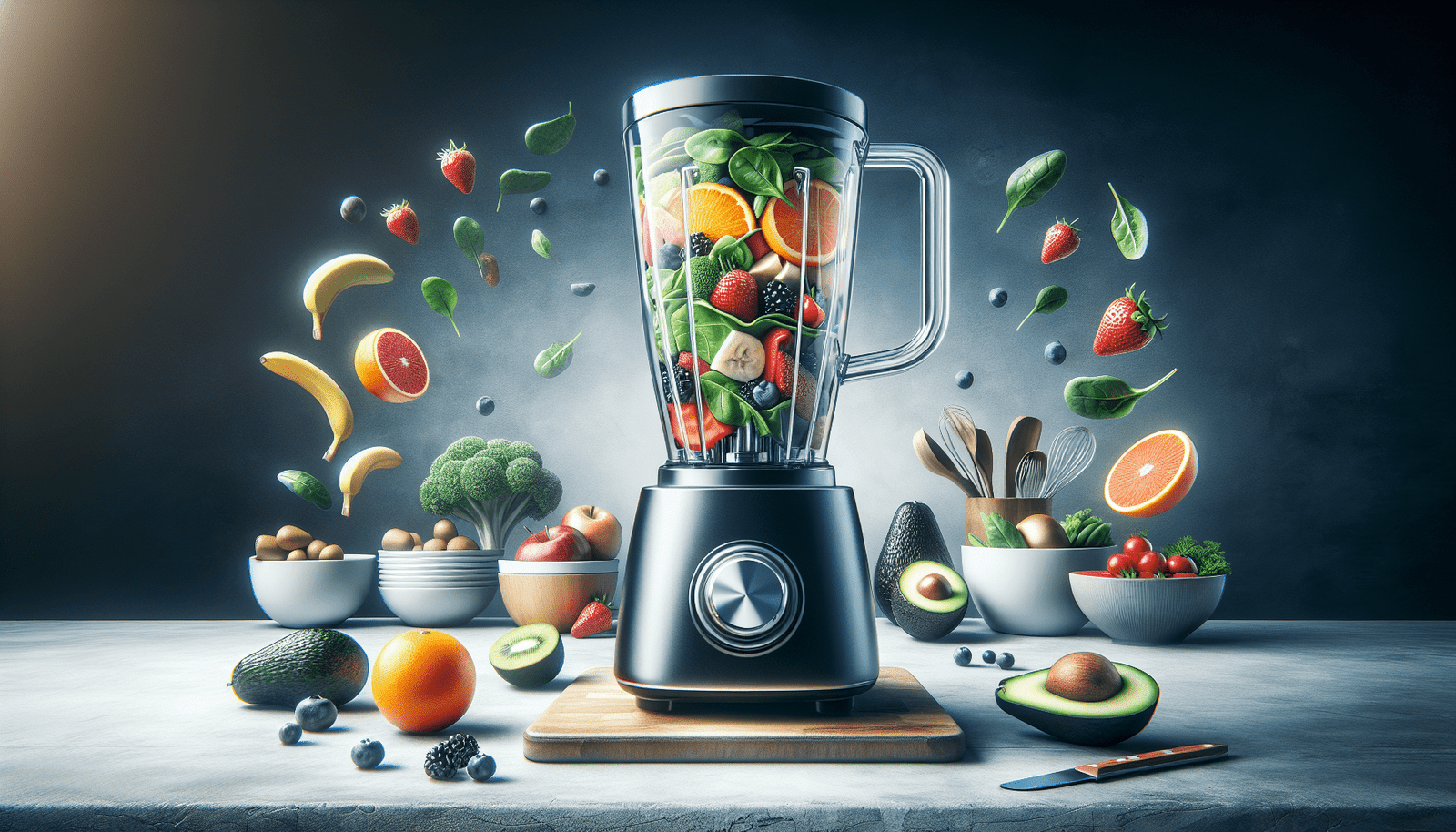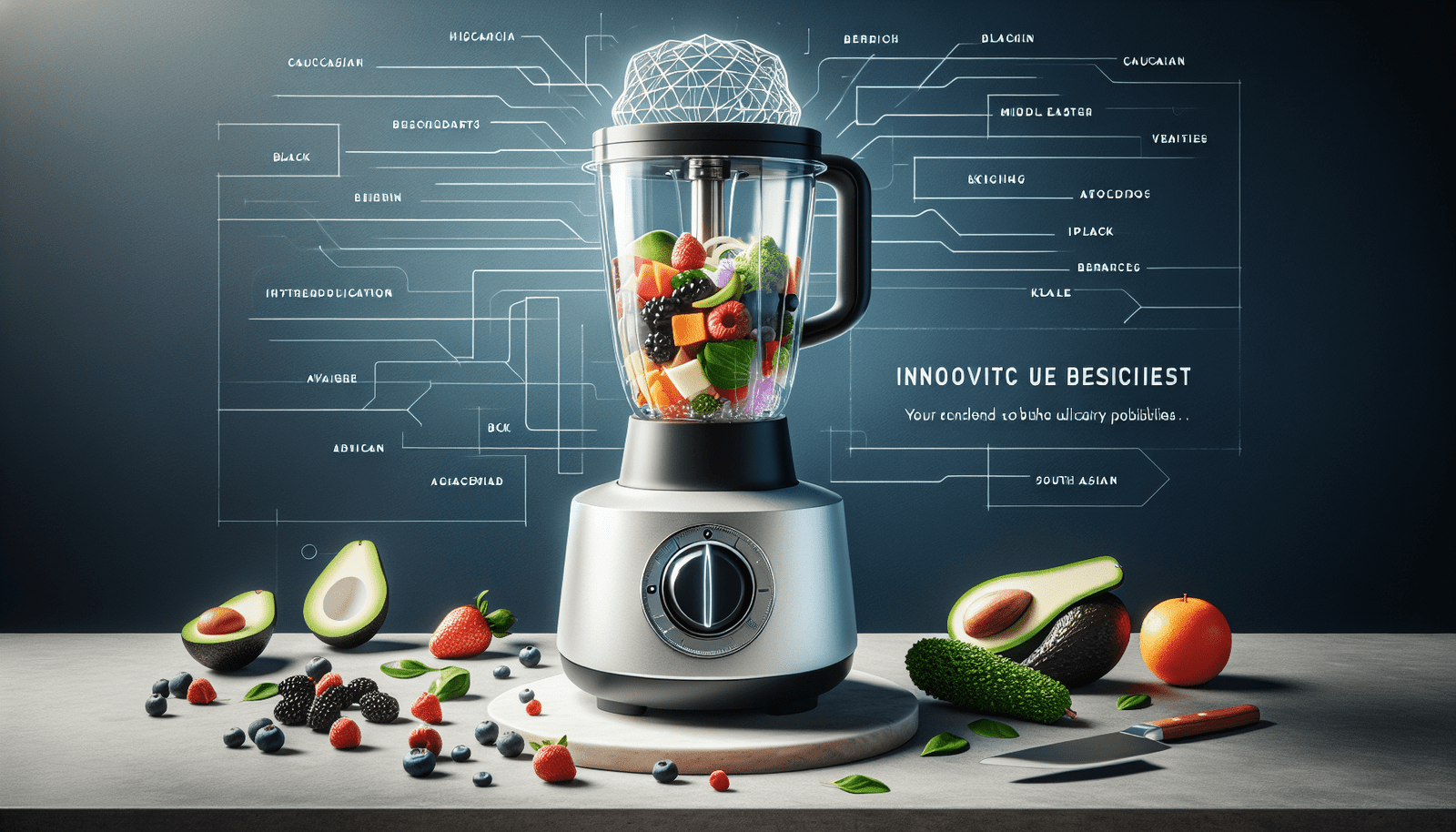In the heart of every kitchen, from cozy home setups to bustling commercial spaces, lies the potential to create dishes that not only nourish but inspire. “innovative blenders for creative chefs” lights the way for those eager to elevate their culinary prowess. With Cooking Appliance World as your guide, discover a realm where cutting-edge blenders are just the beginning. These aren’t just tools; they’re your partners in the quest to push boundaries and explore new flavors. Embrace the opportunity to enhance not just the efficiency of your kitchen but also the creativity it houses. Whether you’re performing magic in a compact home kitchen or orchestrating a symphony of tastes in a high-end restaurant, let these innovative blenders be the keystones of your culinary creations.
Evolution of Blenders in the Culinary World
Historical overview of blenders in cooking
Blenders, as you might know, have undergone quite an evolution since their inception. Initially designed for milkshakes and malts, their purpose in the kitchen has expanded exponentially. It began with the simple desire to mix drinks more efficiently, but inventors quickly realized the potential for this appliance to impact various culinary practices. From the basic models of the past to the high-tech gadgets of today, blenders have found a permanent home in both domestic and professional kitchens.
The role of blenders in modern culinary practices
In today’s culinary world, your blender is more than just a gadget for smoothies. It plays a crucial role in preparing everything from soups and sauces to purees and pastry dough. Modern culinary practices have embraced the blender’s ability to fine-tune texture and flavor, making it indispensable in both quick home cooking and sophisticated restaurant techniques.
Key technological advancements in blender design
Technological advancements in blender design have been significant. You’ve witnessed the introduction of powerful motors, variable speed controls, and durable materials, which enable precise control and longevity. These innovations have transformed the blender from a simple mixing tool to a multi-functional kitchen appliance capable of handling tough ingredients and complex culinary tasks.
Understanding Blender Technology
The mechanics of blending: How blenders work
Understanding how blenders work can enhance your culinary adventures. At its core, a blender mixes ingredients using a spinning blade at the bottom of a container. Motor speed and blade design influence the blender’s effectiveness in creating smooth, uniform textures.
Different types of blenders and their uses
From immersion blenders to full-size countertop models, each type serves specific purposes. Immersion blenders are great for sauces and soups, while countertop blenders are your go-to for smoothies, ice-based drinks, and more. High-performance blenders offer even more versatility, accommodating almost any kitchen task you throw their way.
Innovations in blender motor efficiency and power
Advances in motor efficiency and power have been game-changers. Modern blenders boast motors that are not only powerful but also energy-efficient, making them capable of processing tough ingredients like nuts and ice with ease while keeping energy consumption to a minimum.

Blender Features That Matter to Chefs
Variable speed control and its importance
Variable speed control is vital for culinary professionals. It allows you to start slowly to incorporate ingredients and then accelerate to achieve the desired texture, whether you’re looking for a chunky salsa or a silky-smooth soup.
The significance of blade design and material
Blade design and material significantly impact a blender’s performance. Stainless steel blades ensure durability and maintain sharpness, while varying blade shapes optimize the blending process for different tasks, ranging from crushing ice to pureeing vegetables.
Ease of cleaning and maintenance
For both home cooks and professional chefs, ease of cleaning is paramount. Modern blenders feature detachable parts and materials compatible with dishwashers, simplifying maintenance and ensuring hygiene.
High-Tech Blenders for Professional Kitchens
Commercial vs. Residential blenders: What sets them apart
Commercial blenders are built for durability and continuous use, with powerful motors and large capacities suited for restaurant settings. Residential blenders, while versatile, are designed for lighter use. Knowing the difference is crucial when you’re aiming for efficiency and longevity in a professional kitchen.
Review of top-rated blenders for professional use
Top-rated blenders for professional use offer a mix of power, durability, and precision. Brands like Vitamix and Blendtec stand out for their high-performance models, which are celebrated for their reliability and ability to handle the rigorous demands of a professional kitchen.
Case studies: How top chefs utilize high-tech blenders
Top chefs leverage high-tech blenders to push the boundaries of culinary innovation. From creating ultra-smooth purees that enhance the flavor and texture of dishes to developing new techniques for emulsifications and sauces, professional chefs rely on these tools to maintain their competitive edge.

Innovative Blender Accessories
Customizable jars and containers
Customizable jars and containers allow chefs to optimize their blender’s performance for specific tasks, whether they’re blending a large batch of soup or a small serving of sauce. Choosing the right container can make all the difference in achieving perfect results.
Multifunctional blades for diverse culinary techniques
Blades designed for specific purposes—from grinding grains to cutting through frozen fruit—expand a blender’s versatility. These multifunctional blades enable chefs to explore a wider range of culinary techniques with just one appliance.
Smart technology integrations: Apps and digital controls
Smart technology has made its way into blenders, offering features like apps and digital controls. These innovations provide unprecedented precision in speed and timing, enabling you to achieve consistent results with every use.
The Role of Blenders in Culinary Education
Incorporating blender techniques in culinary schools
Culinary schools now incorporate blender techniques into their curriculum, teaching future chefs how to leverage this tool for culinary innovation. Understanding how to use blenders effectively is essential for any modern culinary professional.
Educational resources for mastering blender use
A wealth of educational resources is available for mastering blender use, from online tutorials to professional courses. These resources cover everything from basic operations to advanced techniques, helping both novices and experienced chefs enhance their skills.
Blender-based recipes for skill development
Developing skills with blender-based recipes is an excellent way for chefs to practice and perfect their technique. From sauces and soups to desserts and drinks, these recipes challenge chefs to use blenders in creative and innovative ways.
Sustainability and Eco-Friendly Blender Options
Energy-efficient models and why they matter
Energy-efficient blender models are becoming increasingly important in a sustainability-conscious world. These models minimize environmental impact without sacrificing performance, aligning with both eco-friendly practices and professional kitchen demands.
Recyclable and eco-friendly materials in blender manufacturing
Manufacturers are now using recyclable and eco-friendly materials in blender production, reducing the carbon footprint associated with these appliances. This shift towards sustainability resonates with both consumers and professionals who prioritize environmental responsibility.
Brands committed to sustainability
Brands that commit to sustainability in their blenders, from manufacturing processes to packaging, are gaining popularity. Look for companies that focus on minimizing waste and promoting eco-friendly practices across the board.
Blenders in Global Cuisine Creation
Exploring international dishes made with blenders
Blenders play a pivotal role in creating international dishes, offering a way to blend diverse ingredients for authentic flavors. From Mexican salsas to Indian chutneys, the versatility of blenders enriches the global culinary landscape.
Blenders’ role in promoting culinary diversity
By facilitating the preparation of dishes from various cultures, blenders help promote culinary diversity. They allow chefs and home cooks alike to experiment with international flavors, broadening their culinary horizons.
Techniques for authentic international cuisine preparation
Mastering techniques for authentic international cuisine preparation using blenders can elevate your cooking. Whether it’s achieving the perfect consistency for a Thai curry paste or emulsifying a French vinaigrette, understanding how to use your blender effectively can make all the difference.
Creative Recipes and Techniques for Chefs
Innovative uses of blenders in recipe development
Discovering innovative uses of blenders in recipe development allows chefs to push creative boundaries. From incorporating aerated textures to developing unique flavor profiles, the blender is a tool for culinary creativity.
Advanced blending techniques for texture and flavor enhancement
Exploring advanced blending techniques can enhance texture and flavor in your dishes. Techniques like pulsing for chunkier textures or using the blender to incorporate air can transform a dish from good to extraordinary.
Signature dishes made easier with modern blenders
Modern blenders make preparing signature dishes easier, offering consistent results and saving time. Whether it’s a velvety soup or a complex sauce, a high-quality blender can help you achieve perfection in your signature creations.
Future Trends in Blender Technology and Culinary Arts
Predictions for the next big thing in blender design
Looking forward, we can expect to see blenders become even more intuitive and multifunctional. Innovations like AI integration for personalized blending experiences and further advancements in eco-friendly design are on the horizon.
How evolving culinary trends influence blender technology
Evolving culinary trends significantly influence blender technology. As chefs and home cooks pursue new flavors and textures, blender manufacturers will continue to innovate, ensuring their products meet these evolving needs.
The future of cooking with AI and smart blenders
The future of cooking looks bright with AI and smart blenders. These technologies promise to make cooking more efficient, personalized, and creative, opening up new possibilities for chefs and home cooks alike. As we move forward, the role of blenders in the culinary world will undoubtedly continue to expand, driven by innovation and a passion for great food.


